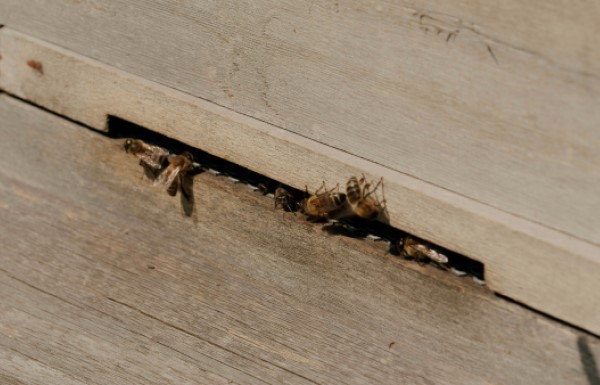You guessed it, here at Beehive Money, we love bees. As pollinators and providers, bees keep the world turning and we’re doing our best to follow their lead. We’re working to build a brighter future for our members, our colleagues and our communities, while doing good for the world around us.
We're sponsoring four beehives in the beautiful valleys of Neath, South Wales. We get regular updates on our hives from Head Beekeeper, Mark and recently we had a few questions for him. Why are bees so busy in autumn and what happens to them during the colder winter months? We're all so used to seeing them buzzing happily throughout the spring and summer months but what do they get up to whilst we're all sipping pumpkin spiced lattes and preparing for Christmas?
What do the worker bees do during the autumn?
During the autumn months the worker bees start to put on as much weight as they can to make sure they stay warm during the cold weather - they even have a fat-producing gene that they switch on. These are the 'new' worker bees, called Overwintering bees that essentially replace the warm-weather worker bees. They can actually live for up to six months whereas their sping and summer sisters live for around six weeks in comparison as they work so hard to collect all the nectar and pollen for their colonies. In general colonies, as the days shorten with darker mornings and evenings the Queen will gradually reduce her egg laying from circa 2000 a day to zero. Next, the busy female worker bees will be evicting the male drone bees - they're not required over winter. Bye, boys! Colony numbers will then massively reduce from around 30,000 to 5,000. The colony need the perfect number of family members to keep warm but not too many as they all need feeding. It’s a fine balance. Finally, the bees will spend their time throughout autumn foraging for the last supplies of food from late flowering plants such as Himalayan balsalm or ivy.
How do bees survive during the winter?
During the harsh winter months the bee colony clusters together to stay warm and protect the hive and continuously shuffle the warm bees from the middle of the hive towards the outside to keep everyone cosy. To keep everyone warm and to produce heat, the bees flex their teeny wing muscles and move slowly across the frames in the hive, eating the honey that they've previously collected. The bees become slower as the weather gets even colder and eventually become dormant when temperatures hit around 8°C.
Do bees leave the hive in the winter?
Brave foraging bees will leave the hive to collect extra water and dilute the honey on warmer winter days when temperatures hit around 12°C. They'll also feed on pollen-producing plants during the winter such as snowdrops and gorse.
Fancy living a day in the life of a bee? Watch our quick YouTube video to find out more about their day to day activities.
When it comes to managing our money, most of us have a brighter future in mind. Whether it’s buying a house, building a pension, saving for something special or supporting the family, these goals give us purpose and peace of mind. But by being part of Beehive Money, just like bees in a hive, we’re all working towards something bigger.









